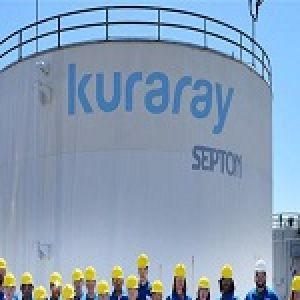Improved Aesthetics With Commercial Epoxy CoatingPosted by kuraraypovaldot on December 2nd, 2021 Keeping industrial floors in top problems is critical to company operations. Downtimes for replacement and repair work are pricey to the company. Flooring damages minimize the charm of industrial areas, making them an inadequate work environment for workers. Facility supervisors count on commercial epoxy (Polyvinyl alcohol) flooring layer applications to keep significant floor problems. Below are a couple of essential yet practical tips in implementing commercial epoxy floor layer application jobs: 1. Select quality over cost. Quality products may set you back more, but they ensure excellent efficiency. 2. Surface area prep work is essential. Fix any problems, tidy, and degrease the surfaces very carefully. Incorrect preparation can trigger the rest of the application procedure and the finished floorings to fall short. 3. Contact the experts. Specialists have the abilities, experience as well as resources to provide quick and error-free applications. Why Epoxy Coatings? Industrial epoxy floor covering items stand above the remainder in providing the highest quality and most satisfactory performance in industrial flooring applications. They are highly resistant to oil, chemicals, water, and physical effects from mechanical lots and pedestrian website traffic. These aspects attack commercial floors frequently throughout day-to-day procedures. Industrial epoxy floor coating products are also great products for floor improvement. There are several epoxy items with a vast array of shade options to pick from. Epoxy works well as concrete finishes or topcoats that improve the appearance of industrial floor finishes. Industrial Epoxy Floor Covering Application Issues There are situations when commercial epoxy floor finish applications experience difficulties that endanger the process of reviving the elegance and good condition of commercial floors. Here are a few of them: 1. Formation of air bubbles as well as pinholes. Thick epoxy layers can develop round bubbles from entrapped air. This can originate from either an incorrect mixing rate, cement out-gassing, or the improper use of foam rollers during application. 2. Unequal colouration. Unsightly distinctions in coating shade originated from mixing tiny sets of industrial epoxy floor layer products or working in sun-exposed atmospheres. 3. Fisheyes. Fisheyes are small craters emerging in the layered surface area and are due to the existence of oil and dirt fragments being available in contact with the finishes. Reasons For Bond Failure The primary factor for complete layers failing is commonly a hidden adhesion failing. Below are the reasons that suitable attachment is not achieved: 1. Ultra-violet radiations. Direct exposure to the sun\'s rays can break down the glue residential properties of epoxy finishes, transforming it brittle as well as susceptible to cracking. 2. High humidity. Industrial epoxy (PVA powder) flooring covering products transform their residential or commercial properties when subjected to moist surroundings. Item prep work, mixing and application are jeopardized. 3. Dampness. Moist surface areas, especially concrete, are prone to adhesion failing. When flowing water is present throughout the application, it deteriorates the glue bond between the surface and finishing. 4. International contaminants. Dirt, dirt, grease, and oil decrease surface attachment. Oils, specifically, causes hollows and gaps within the coating, causing failing over time. Industrial epoxy floor layer items are frequently the top option for floor maintenance and repair. They are rugged, long-lasting, as well as can be found in lots of colours. With excellent surface preparation, commercial epoxy flooring covering applications have a high chance of success. Like it? Share it!More by this author |


